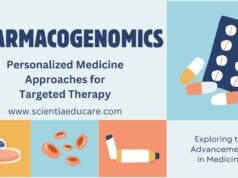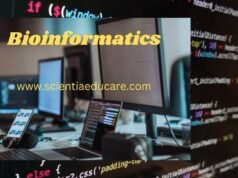Pharmacology: Comprehensive Guide to Drug Discovery and Mechanism of Action
Introduction
Pharmacology is the branch of medicine and biology concerned with drug actions on biological systems. It covers drug discovery, development, and the mechanisms through which drugs exert their therapeutic effects. Understanding pharmacology is essential for medical professionals, researchers, and students in the healthcare domain.
Best drug discovery techniques,
Understanding drug metabolism process,
Mechanisms of drug action explained,
Low competition pharmacology topics,
Pharmacokinetics and drug absorption.
Drug Discovery Process
The process of discovering new drugs is complex and involves several critical stages:
1. Target Identification and Validation
- Researchers identify biological molecules (targets) involved in diseases.
- Common drug targets: enzymes, receptors, ion channels, and transporters.
- Validation ensures the selected target is relevant and can be modulated by drugs.
2. Hit Identification and Lead Optimization
- High-throughput screening (HTS) helps identify molecules (hits) that interact with targets.
- Hits are optimized to enhance efficacy, reduce toxicity, and improve pharmacokinetics.
3. Preclinical Studies
- Tests conducted on animals to assess drug safety and effectiveness.
- Includes toxicology, pharmacokinetics (ADME: Absorption, Distribution, Metabolism, Excretion), and pharmacodynamics.
- Regulatory agencies require detailed preclinical data before proceeding to human trials.
4. Clinical Trials
Clinical trials are conducted in multiple phases to evaluate the drug’s safety and efficacy:
- Phase I: Small group (20-100) of healthy volunteers to assess safety.
- Phase II: Larger group (100-500) to evaluate efficacy and side effects.
- Phase III: Large population (1000-5000) to confirm effectiveness and monitor adverse reactions.
- Phase IV: Post-marketing surveillance to track long-term effects.
Mechanism of Action (MOA)
The mechanism of action refers to how a drug exerts its effects at a molecular level. Understanding MOA is crucial for designing effective drugs with minimal side effects.
1. Interaction with Receptors
- Agonists: Activate receptors (e.g., Morphine activates opioid receptors to relieve pain).
- Antagonists: Block receptors (e.g., Beta-blockers inhibit beta-adrenergic receptors to lower blood pressure).
2. Enzyme Inhibition
- Many drugs inhibit enzymes to prevent the formation of harmful substances (e.g., Statins inhibit HMG-CoA reductase to reduce cholesterol levels).
3. Ion Channel Modulation
- Some drugs regulate ion channels to control nerve signals and muscle contractions (e.g., Calcium channel blockers reduce blood pressure by limiting calcium influx).
4. Transporter Proteins
- Transporter proteins help drugs enter or exit cells (e.g., Selective serotonin reuptake inhibitors (SSRIs) block serotonin reuptake to treat depression).
5. DNA/RNA Targeting
- Some anticancer drugs interfere with DNA replication (e.g., Doxorubicin inhibits topoisomerase to prevent cancer cell growth).
Emerging Trends in Drug Discovery
- Artificial Intelligence (AI) and Machine Learning: Helps in predicting drug interactions and designing novel compounds.
- Personalized Medicine: Tailors drug therapy based on genetic profiling.
- Biologics and Monoclonal Antibodies: Target specific proteins in diseases like cancer and autoimmune disorders.
- CRISPR and Gene Editing: Holds promise for treating genetic disorders at the molecular level.
Challenges in Drug Discovery
- High research costs and lengthy development timelines.
- Regulatory hurdles and ethical considerations in clinical trials.
- Drug resistance, especially in antibiotics and cancer therapies.
Website URL Links for More Information
For in-depth insights into pharmacology and drug discovery, refer to the following links:
- FDA Drug Development Process
- National Center for Biotechnology Information (NCBI)
- PubMed – Research Articles
- World Health Organization (WHO) – Essential Medicines
Further Reading
- Pharmacology Basics – Merck Manual
- European Medicines Agency (EMA) – Drug Approvals
- American Association of Pharmaceutical Scientists (AAPS)
Conclusion
Pharmacology plays a crucial role in healthcare by enabling the discovery of life-saving drugs and understanding their mechanisms. With advancements in AI, gene editing, and personalized medicine, the future of pharmacology is promising. Continued research and ethical considerations will ensure the development of safer and more effective drugs.
MCQs on Pharmacology: Drug Discovery and Mechanism of Action
1. What is the first step in drug discovery?
A) Clinical trials
B) Preclinical testing
C) Target identification
D) Drug approval
Answer: C) Target identification
Explanation: The first step in drug discovery involves identifying a biological target, such as a protein or gene, that plays a role in disease.
2. Which phase of clinical trials primarily tests drug safety in healthy volunteers?
A) Phase I
B) Phase II
C) Phase III
D) Phase IV
Answer: A) Phase I
Explanation: Phase I clinical trials evaluate the safety and dosage of a drug in a small group of healthy volunteers.
3. The process of finding new drugs using computational tools is called:
A) Pharmacovigilance
B) In silico screening
C) Pharmacodynamics
D) Pharmaceutics
Answer: B) In silico screening
Explanation: In silico screening involves the use of computer-based techniques to predict drug interactions and efficacy.
4. What is the main purpose of preclinical testing?
A) To determine drug price
B) To assess safety and efficacy in animals
C) To gain FDA approval
D) To test in humans
Answer: B) To assess safety and efficacy in animals
Explanation: Preclinical testing evaluates a drug’s safety and effectiveness in animal models before human trials.
5. What does ‘bioavailability’ refer to?
A) The amount of drug that is excreted
B) The rate and extent of drug absorption into the bloodstream
C) The drug’s solubility in water
D) The drug’s side effect profile
Answer: B) The rate and extent of drug absorption into the bloodstream
Explanation: Bioavailability is the proportion of a drug that reaches systemic circulation in an active form.
6. Which organ is primarily responsible for drug metabolism?
A) Kidney
B) Liver
C) Lungs
D) Pancreas
Answer: B) Liver
Explanation: The liver contains enzymes that metabolize drugs, primarily through the cytochrome P450 system.
7. What is an agonist?
A) A drug that blocks receptor activity
B) A drug that enhances receptor activity
C) A drug that causes toxicity
D) A drug that inhibits metabolism
Answer: B) A drug that enhances receptor activity
Explanation: Agonists activate receptors, mimicking the action of natural ligands.
8. The term ‘half-life’ of a drug refers to:
A) The time required for half the drug to be eliminated
B) The time required for the drug to reach maximum concentration
C) The time required for drug absorption
D) The time required for a drug to take effect
Answer: A) The time required for half the drug to be eliminated
Explanation: Half-life is the time taken for plasma concentration of a drug to reduce by 50%.
9. Which route of drug administration has the fastest onset of action?
A) Oral
B) Intravenous
C) Subcutaneous
D) Intramuscular
Answer: B) Intravenous
Explanation: IV administration delivers the drug directly into the bloodstream, leading to rapid action.
10. A ‘prodrug’ is:
A) An inactive drug that becomes active in the body
B) A drug that has a prolonged half-life
C) A drug with high bioavailability
D) A drug that requires refrigeration
Answer: A) An inactive drug that becomes active in the body
Explanation: Prodrugs undergo chemical transformation in the body to become active.
11. Which of the following is an example of a competitive antagonist?
A) Morphine
B) Naloxone
C) Insulin
D) Diazepam
Answer: B) Naloxone
Explanation: Naloxone competes with opioids at receptors to reverse overdose effects.
12. A drug that has a low therapeutic index (TI) means:
A) It is highly safe
B) It requires close monitoring
C) It is ineffective
D) It is rapidly excreted
Answer: B) It requires close monitoring
Explanation: A low TI means the effective and toxic doses are close, requiring careful dosage control.
13. What is the primary function of cytochrome P450 enzymes?
A) Drug excretion
B) Drug metabolism
C) Drug absorption
D) Drug transportation
Answer: B) Drug metabolism
Explanation: Cytochrome P450 enzymes in the liver metabolize drugs for elimination.
14. A drug’s mechanism of action describes:
A) Its chemical structure
B) Its side effects
C) How it produces its effect
D) Its cost-effectiveness
Answer: C) How it produces its effect
Explanation: The mechanism of action explains how a drug interacts with biological targets.
15. A selective beta-1 blocker primarily affects:
A) Lungs
B) Liver
C) Heart
D) Kidneys
Answer: C) Heart
Explanation: Beta-1 blockers reduce heart rate and blood pressure by acting on cardiac receptors.
16. Which phase of drug metabolism involves conjugation reactions?
A) Phase I
B) Phase II
C) Phase III
D) Phase IV
Answer: B) Phase II
Explanation: Phase II metabolism involves conjugation reactions that increase drug solubility.
17. The placebo effect is:
A) A drug-induced toxic reaction
B) A physiological response to an inactive substance
C) A type of drug allergy
D) A drug’s failure to work
Answer: B) A physiological response to an inactive substance
Explanation: The placebo effect occurs when patients experience benefits from an inactive substance due to psychological factors.
18. Which type of receptor is the fastest in response time?
A) G-protein coupled receptors
B) Ion channel receptors
C) Enzyme-linked receptors
D) Nuclear receptors
Answer: B) Ion channel receptors
Explanation: Ion channel receptors mediate rapid responses by allowing ions to flow across membranes.
19. Which process describes the removal of a drug from the body?
A) Absorption
B) Distribution
C) Metabolism
D) Excretion
Answer: D) Excretion
Explanation: Drug excretion primarily occurs through the kidneys via urine or bile.
20. A drug that requires active transport for absorption is likely to be:
A) Lipophilic
B) Hydrophilic
C) Non-polar
D) Volatile
Answer: B) Hydrophilic
Explanation: Hydrophilic drugs need active transport to cross membranes.














